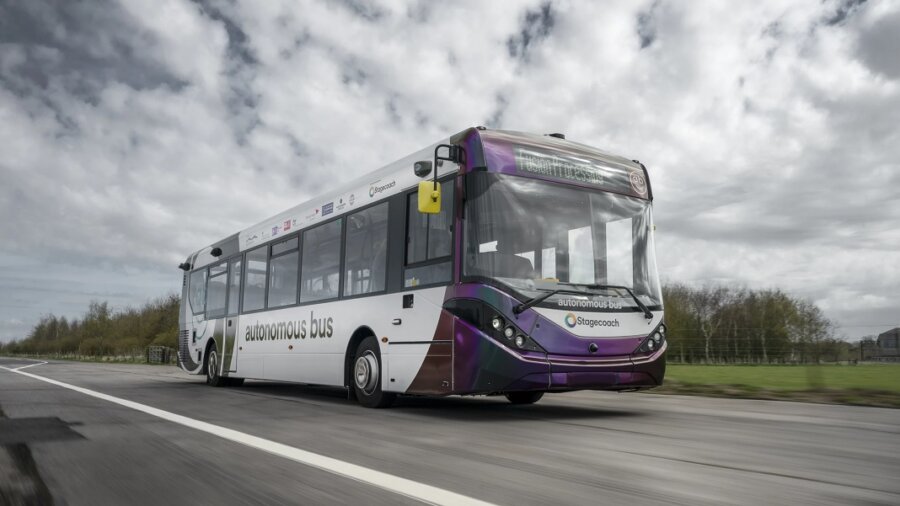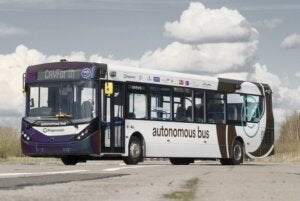
Driverless buses may beat driverless cars in becoming a commonplace mode of transportation. It would make sense; buses run on fixed routes, always stop in the same places, don’t need to go too fast, and since they’re bigger and heavier, could feel like a safer venue for passengers to get used to the lack of a human driver.
Self-driving buses or shuttles have been tested in Spain, China, Norway, Paris, and elsewhere. The newest addition to this list is Scotland, where technology company Fusion Processing, in partnership with bus company Stagecoach, started testing driverless buses this week. The 14-mile route runs between a park & ride lot and a train/tram interchange near Edinburgh.

Somewhat harrowingly, the route includes a long-span suspension bridge, Forth Road Bridge, which is over 2.5 kilometers long in total and runs 1,006 meters between its two main towers (that’s 3,300 feet, a little over half the total span of the Brooklyn Bridge). Though perfectly safe, it seems a more unsettling location for a bus full of passengers with no human driver to break down than, well, not a long suspension bridge.
Luckily, the bus will have a safety driver on board, as all autonomous vehicles do during road tests. The buses are classified as having Level 4 autonomy; there are five levels of automation in driving, with Level 5 being full autonomy, in which the vehicle can drive itself anywhere (around cities, on highways, on rural roads, etc.) in any conditions (rain, sun, fog, etc.) without human intervention. Level 4 means a car can operate without a safety driver under certain conditions (namely, good weather), and will still have a steering wheel.
The steering wheel, gas, and brakes that safety drivers will use if they need to take over are separate from the system the buses use to navigate autonomously. During the initial two-week testing period, buses will run without passengers, but the companies involved are aiming to have riders on board by summer.

The self-driving software made by Fusion Processing, called CAVstar for “connected and autonomous vehicles,” isn’t limited to radar, lidar, or cameras, but rather integrates all three. The buses are clearly marked as autonomous so nearby drivers are aware that a computer’s running the show. The question is, how much will this impact drivers’ behavior and relevant driving decisions? Would you feel less rude cutting off a driverless bus? More obliged to let it pass you? Or just sort of confused by the whole situation?
Each bus can carry 36 passengers, and the number of planned trips per day mean the autonomous buses could move up to 10,000 passengers a week. The project’s leaders anticipate the self-driving buses reducing average trip time and improving schedule reliability of the route. This sounds like it’ll mostly be a good thing, but what will happen when, say, an elderly or disabled passenger needs some extra time to get on or off the bus?
The project’s development included a phase where 500 local citizens gave the companies feedback about the autonomous bus service, including details about would make them feel comfortable as passengers on this type of service. Somewhat counter-intuitive to the whole concept of autonomy, people said they wanted a “member of staff” on board each bus—whether that’s a driver or a software engineer or a “Captain,” it seems people want the reassurance of being able to look to a human if something unexpected happens (like a bus breaking down halfway across a long-span suspension bridge).
Initial road testing will last two weeks. After that, Fusion Processing CEO Jim Hutchinson said in a press release, “We look forward to welcoming passengers onboard in a few months’ time.”
Image Credit: Fusion Processing
* This article was originally published at Singularity Hub

0 Comments